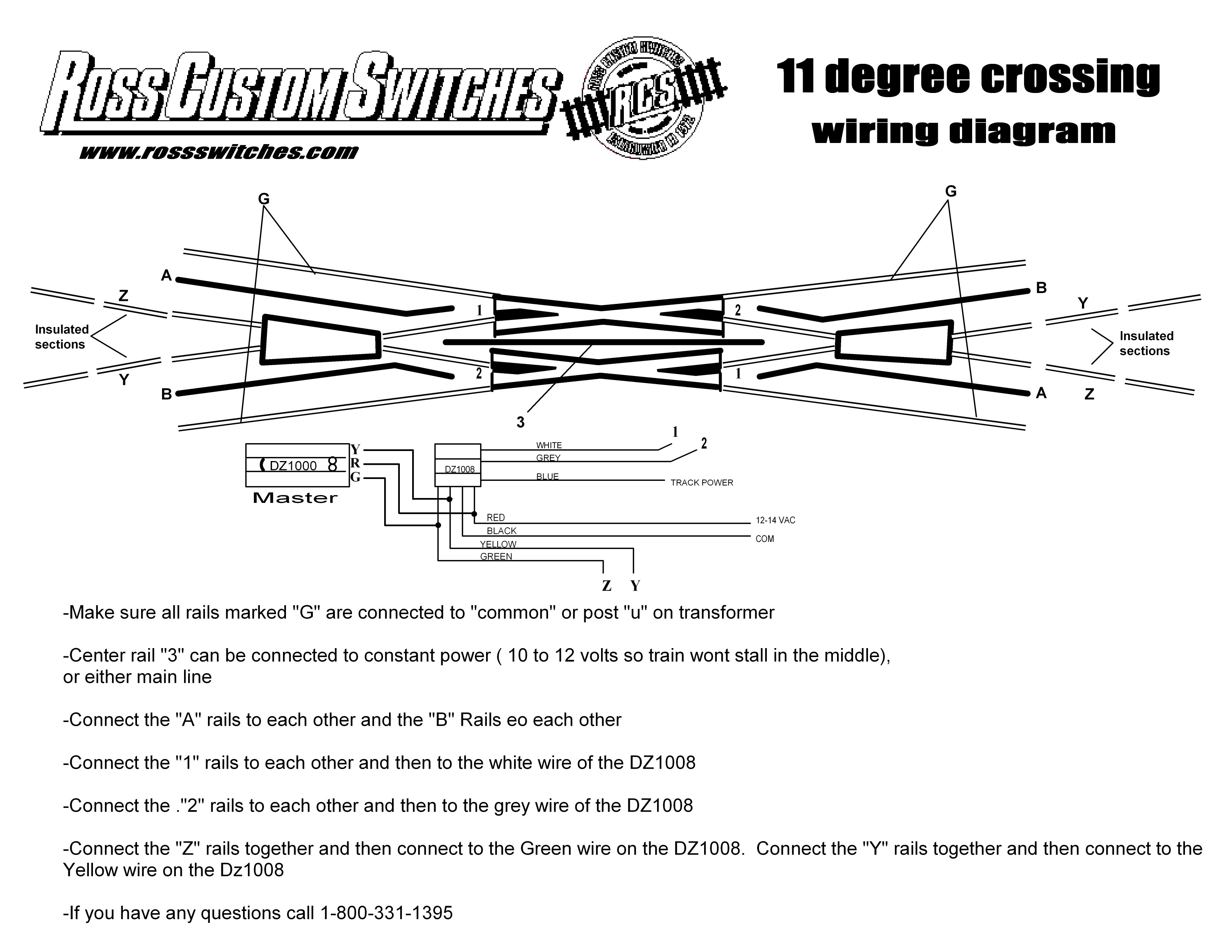Hello,
I need a little help with wiring options using DZ push button control. Can I have non-derailing and push-button control?
|




|
Hello,
I need a little help with wiring options using DZ push button control. Can I have non-derailing and push-button control?
Replies sorted oldest to newest
Single Slip? What's that?
I have the Ross Double Slip switches, but I never heard of a Single Slip switch. That sounds like a plain switch.
Go to the Z Stuff for Trains website. All wiring diagrams are under "Applications"
Bruce
None for any slip switch Bruce, and I'm still looking for what a Single Slip switch is. ![]()
A quick web search shows the term “single slip switch” is fairly common, and there is a definition. Lots of single slip vs double slip discussions.
Anyway, I knew what Ray meant. And Bruce is correct, go to the Z-Stuff web site. Lots of great info for their products.
Well, I found them, but I'm afraid I don't see the distinction between a "single slip switch" and a "double slip switch". Of all the examples I found, they seem to be identical.
Z-stuff has no slip switches represented in the applications as I said.
The real reason for the question is I actually talked to Steve at Ross about non-derailing for the DSS (as I say, seems identical to what you're calling a single slip switch), and he stated he had no idea how that could be made to work!
Here's what I find for Single and Double slip switches, you tell me what the difference is, I'm sure not seeing it!


On the Single slip photo above the track entering from the bottom left can only go straight through. The track on the bottom right can only go straight through.
The single slip is frequently used on the outer most edge of a yard throat where there is no major need to cross over.
You can see single slips used in the outer edges of the passenger yard in photos of the old Broad Street PRR station.
Gents,
My mistake, apologies....i meant a single cross-over...wrong usage...can we try again?
R
A good animation showing the difference. https://dccwiki.com/Crossovers_and_Slips They both exist however from the photos posted above I can't see enough detail to tell them apart. j
Ray, Ross makes a #4 Crossover switch. 2 of the same switch combined into 1 to create a crossover. I’m assuming you are creating the same thing using 2 of there standard switches. I would guess one turnout control will switch both DZ motors. Seeing your only options are either straight on both tracks or crossing over.
I can’t help with the non derailing part. I looked but couldn’t find the instructions for the #4 Crossover on Ross’ site.
@RayR posted:My mistake, apologies....i meant a single cross-over...wrong usage...can we try again?
Are you talking about the 11 Degree Crossing?

John,
I think the original post was asking about a single crossover because a crossing would not need a "non-derail feature" or "push-button control." That said, to operate a crossover safely, only one push-button control attached to both switch machines should allow for remote application of power and provide somewhat of a "non-derail" feature. That way, with one push of the button, trains are either going to remain on the same track OR are going to change tracks.
Chuck
The DZ 1000 switch motor in the diagram, logically powers short dead-rail sections, of the cross-over, to enhance continuous third-rail power, to a unit/locomotive, with a short spacing, between pick-up rollers. Instead of non-derail move-able point, switching, the two trigger sections, allow for the proper power, to the three dead-rail sections pictured, numbered ( 1, 2, and 3). IMO, it's a long distance through the middle of this cross over.

Ray, can you post a picture of what you have. You mentioned non derailing in your post. Which means movable switch points. Not a crossing. I’m guessing you are using 2 of the same Ross regular switches either right or left. No’s. 100 or 101 to cross from one track to another.
I can see why the OP was confused by this configuration, never thought of using a switch motor for something like this. ![]()
Here's what I find for Single and Double slip switches, you tell me what the difference is, I'm sure not seeing it!
Says GRJ.


The single slip switch has only the track pieces on the upper side of the switch to allow passage only on the upper side of the switch.
The double slip switch has rails on both the upper and lower to allow both actions to happen. Thru upper, thru lower, and crossover from both directions.
These examples are for two rail layouts, I have to check for three rail models.
ChooChooPaul,
Your explanation is not totally accurate. Any train entering the single-slip switch in GRJ's photo from the upper left or upper right can exit on either track to the right or left, respectively, because two sets of switch points are provided. However, any train entering from any lower track can not change tracks (actually uses this switch as a crossover only) due to the lack of a second (lower) set of turnout points.
The double-slip switch actually has four sets of points allowing for entry to the switch from any location and exit from the switch from one of two tracks on the other side of any of the four points.
Chuck
Education continuing. I had actually never heard of the single-slip switch before this thread. I'm using several of the double-slip switches on my layout, but I didn't realize there was half of one available. ![]()
Access to this requires an OGR Forum Supporting Membership
